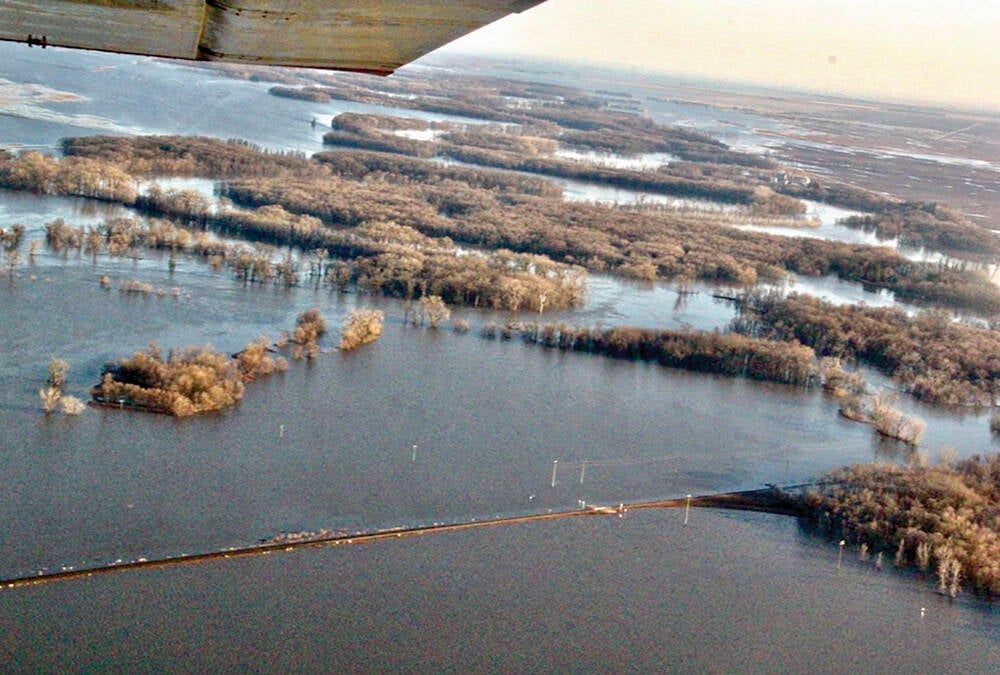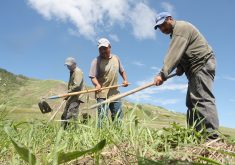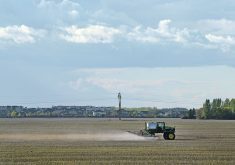Federal pilot project is designed to not only attract immigrants to rural communities but also to encourage them to stay
A federal pilot program is being credited with helping bring much-needed immigrants to a rural community in Alberta.
“We have a lot of seniors facilities in this community, a lot of health care, and just an aging community,” said Brady Schnell, economic development officer for the Town of Claresholm, north of Fort Macleod.
“I think without that program, we would have seen a decline in population, and a decline in population for communities is kind of a black mark to developers, to home builders, to bank lenders, even to the provincial government that brings funding for your capital infrastructure and operations.”
Read Also

Rural Manitoba resources slim on natural disaster planning
A study from Brandon University’s Rural Development Institute has found that many rural and small municipalities don’t have the staff or resources to make formal climate plans against natural disaster.
Claresholm was the only community in Alberta chosen for the federal Rural and Northern Immigration Pilot program, which was launched in 2020. It involves 11 communities in northern Ontario and Western Canada, including Moose Jaw, Sask., as well as Brandon and Altona/Rhineland in Manitoba.
Immigrants tend to be attracted to large cities, said Schnell. The program seeks to spread the benefits of economic immigration by creating a path to permanent residence for skilled foreign workers who want to live and work in smaller communities, he said.
Rural communities typically don’t offer the same level of services as even smaller cities, or contain the cultural groups and foods familiar to immigrants, said Lisa Degenstein, rural program manager for the Calgary Catholic Immigration Society.
“They might feel more of a sense of community in a larger centre for those reasons because more people have emigrated there before them.”
One goal of the pilot program is not only to attract immigrants to rural communities but also to encourage them to stay, she said. “And we know that when people arrive in a community, if they feel welcomed, if they feel a sense of belonging in a community, the chances of them staying are greater.”
Schnell said one candidate from China enjoyed the feeling of not being crowded by other people in Claresholm, which she at first had difficulty even describing.
“Clear roads, clear sidewalks, more personal space in places like when you go to the gym, and she really appreciated that.”
A candidate from India liked how he could enjoy a morning in town with his family, drive to Calgary to conduct an errand, and return home the same day, said Schnell.
“I’ve questioned a few folks from India or the Philippines, like ‘you’re from a big city, you probably won’t be happy in a small town,’ and they defend it quite strongly. ‘No, this is what I’m looking for. We’re looking for a quiet place. This is the type of lifestyle we want’.”
Schnell was tasked in 2018 with learning about the challenges faced by businesses in Claresholm. The most common issue was shortage of labour, he said.
“Tim Hortons said we don’t have enough staff to stay open 24-7… and then health care, of course, and food service and gas stations and even family-owned restaurants, everybody said the same sort of thing: ‘We don’t have enough workers’.”
The problem is not unique to Claresholm, which according to the Alberta government had a population of 3,742 people in 2021, down from 3,994 in 2013 but an increase from 3,730 in 2019.
“If I look to Pincher Creek or Fort Macleod or even Vulcan, the top two barriers in these small communities are labour and housing,” said Schnell.
Claresholm also isn’t alone in having an aging population. Statistics Canada announced in 2015 that, for the first time, there were officially more Canadians over the age of 65 than under 15.
“We don’t have as many kids anymore… and so what this comes down to is that without immigration, Canada’s labour force is literally getting smaller,” said Schnell. “And so, we’re feeling that more heavily in the small communities because the immigration that does occur, it tends to flock to the major cities.”
The program was originally slated to end after three years on Dec. 31, 2022, but it was extended to August 2024 because of the COVID-19 pandemic, he said.
“And what really blew my mind was when the program was announced, we opened an online portal for immigrants to create a profile so that they could apply for jobs, and in the first few weeks we were getting I think about 850 profiles every week.”
Claresholm’s immigration portal currently has about 36,000 profiles from potential candidates, said Schnell.
Candidates must fulfil four main requirements. These include at least one year of continuous work experience within the last three years, a valid language assessment for English within the last two years, an education credential assessment that shows they have the equivalent to the Canadian high school level and sufficient personal funds to cover the cost of settling in the community, said Schnell.
Eligible employers must be within a 25-kilometre radius of Claresholm and complete an orientation. They have included companies at the Claresholm Industrial Airport in the Municipal District of Willow Creek, and a business in Granum, said Schnell.
There has been no participation by farmers despite some early interest in the program. Producers typically seek seasonal workers rather than full-time employees.
Immigrants have obtained jobs ranging from food services and hotel staff to mechanics, said Schnell.
“We’ve had a registered nurse, we had a project manager for a construction outfit, we had a financial manager for a startup company… it’s been quite a variety.”
Forty-nine immigrants have been recommended for full-time employment at 24 businesses in Claresholm since 2020, which, including family members, works out to a total of about 135 people from 12 different countries, he said.
The town’s residents were initially apprehensive about the impact of the immigrants on their community, with about 25 percent of the comments on the town’s Facebook page being negative: “‘Who did this, where’s all these jobs, why wasn’t I asked?’” said Schnell.
Despite a blizzard, about 150 people attended an open house on immigration in 2019, he said.
“I guess it’s the unknown that scares people, but the more they understand how the program works, the more comfortable they’ve been with it.”
Schnell said a nearby producer whose family has been ranching since the 1890s “told an excellent story. He said in the 1910s, it was the Norwegians, and then in the ’30s, it was the Scandinavians, and then it was the Dutch, and then in the 2000s, it was the Filipinos…. This whole town is built on immigrants; this whole province, right?”
















